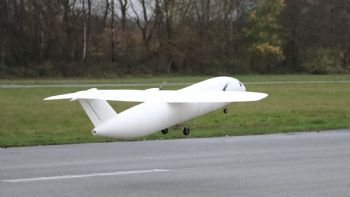
At the recent
ILA Berlin Air Show, Airbus showed a mini plane constructed almost entirely via 3-D printing. Known as Thor and intended to demonstrate what the future of aeroplane manufacturing might be, the plane is windowless, weighs 21kg and is just under 13ft long. It was 3-D printed using polyamide, with the only parts not printed being the electrical components.
Detlev Konigorski, who headed the development of Thor at Airbus, said the project was aimed at testing what is possible with 3-D printing technology. “We want to see if we can speed up the development process by using 3-D printing, not just for individual parts but for entire systems.”
While 3-D printing is being used increasingly in health-care — and to rapidly prototype designs prior to manufacture — there is a great interest in using 3-D printed components to speed up the production of aircraft. That said, only 3-D printed plastic parts can currently be approved for use in aircraft carrying people, as there are concerns that 3-D printed metal components are not yet as strong and safe as traditionally manufactured metal components.
A recent study by America’s Carnegie Mellon University, which used ‘deep X-rays’ to analyse 3-D printed titanium parts, found that there can be significant flaws when titanium metal powders are sintered, as gas can become trapped in the resulting liquid layer, creating porous bubbles within the final solidified metal part.
Despite this, Airbus is currently testing how to 3-D print an entire injection assembly for a jet engine, rather than manually assembling it from 270 individual pieces.
Moreover, last month Airbus filed a patent relating to a new 3-D printing process that aims to make it possible to print an entire aircraft’s exterior — in one go — from multiple metals. Other aerospace firms also see the huge potential offered by additive manufacturing.
For example, Boeing is using 3-D printing to create fuel nozzles, sensors and fan turbine blades for its 777 range of passenger airliners, while the Lockheed Martin/Boeing joint venture United Launch Alliance (ULA) is testing plastic 3-D printed parts as an outer shell on its Atlas V rockets.